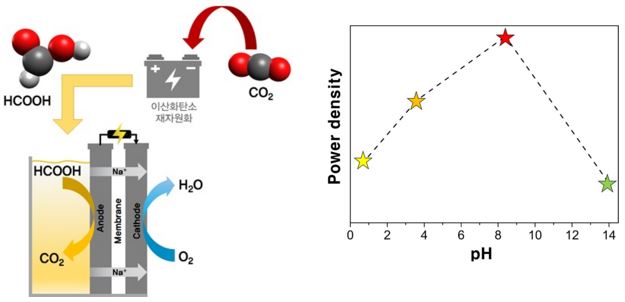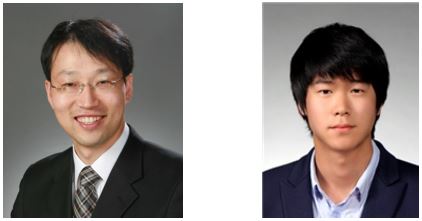Media Center
A multimedia mosaic of moments at GIST
GIST Excellence
[Press Release] Professor Jaeyoung Lee"s research team has identified conditions to maximize the power output of fuel cells
- 엘리스 리
- REG_DATE : 2015.11.23
- HIT : 918
Conditions to maximize the power output of fuel cells, improving fuel cell performance by 71% when compared to the optimum alkaline electrolyte solution, has been published in ACS Catalysis

(Left) The concept of using carbon dioxide, which is
obtained by recycling formic acid. (Right) The graph confirms the best pH performance
of fuel cells.
GIST (Gwangju Institute of Science and Technology) Professor
Jaeyoung Lee of the School of Environmental Science and Engineering and the
Ertl Center for Electrochemistry and Catalysis has succeeded in confirming the
direct formate pathway in HCOOH/HCOO- oxidation, which leads to better oxidation
kinetics at the optimal pH. To validate the direct formate pathway for use in a
practical direct formate acid fuel cell, a proof of concept experiment was
designed whereby the phosphate buffer solution was excluded to avoid the
presence of anion species because these anion species can lead to additional
complexity in the system as well as difficulties when analyzing the results.
Therefore, pH was controlled only by changing the HCOOH/HCOO- molar ratio. By
replacing the Na+ form with the H+ form of conducting polymer electrolyte
membrane, the H+ ion transfer coefficient has been shown to be approximately 7
times higher than that of Na+. The cell performance was gradually enhanced with
increasing HCOO-, which is the direct formate pathway.
This research is expected to contribute to improvements in the
performance of fuel cells and was published on the October 13, 2015, in the
online edition of ACS Catalysis with the title: "Influence of Solution pH
on Pt Anode Catalyst in Direct Formic Acid Fuel Cell."

Professor Jaeyoung Lee who was the paper"s corresponding
author said, "The results of this study demonstrate the criteria necessary
to maximize the performance of fuel cells as an energy source. Developing a
highly reactive catalyst to obtain maximum power output in conjunction with a
high-performance fuel cell can be used for reliable distributed power
generation."